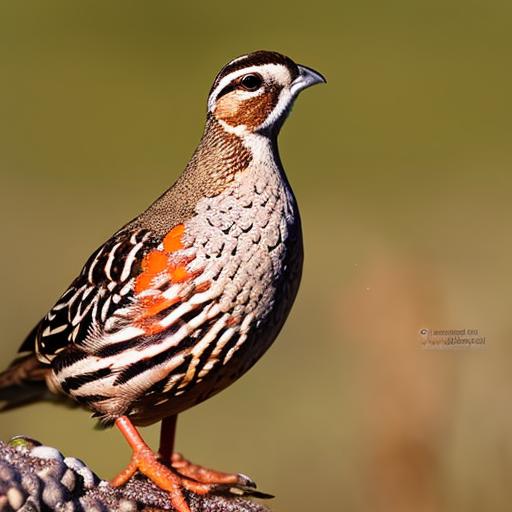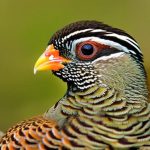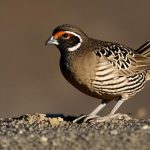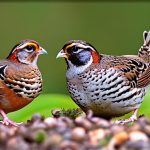Quail, like many other birds, are susceptible to heat stress, especially during the hot summer months. Heat stress occurs when the bird’s body temperature rises above the normal range, causing discomfort and potentially leading to serious health issues. Quail are particularly sensitive to high temperatures because they lack sweat glands and rely on panting to regulate their body temperature. When the ambient temperature is too high, quail may struggle to cool down, leading to heat stress. This can manifest in symptoms such as panting, lethargy, reduced feed intake, and even death in severe cases. It’s crucial for quail owners to understand the signs of heat stress and take proactive measures to prevent it.
Heat stress in quail can have a significant impact on their overall well-being and productivity. In addition to the physical discomfort it causes, heat stress can also lead to decreased egg production, poor hatchability, and reduced growth rates in young birds. Therefore, it’s essential for quail owners to be vigilant and proactive in managing heat stress to ensure the health and productivity of their flock. By understanding the factors that contribute to heat stress and implementing appropriate measures, quail owners can help their birds thrive even in hot weather.
Key Takeaways
- Heat stress in quail can lead to decreased egg production, poor growth, and even death
- Providing adequate shade and shelter can help quail regulate their body temperature
- Proper ventilation is essential to prevent heat buildup in quail housing
- Cool and fresh water should be readily available to quail at all times
- Misting or fans can be used to cool down quail during hot weather
- Adjusting feeding schedules to cooler times of the day can help reduce heat stress
- Regularly monitor quail for signs of heat stress such as panting, wing spreading, and decreased activity
Providing adequate shade and shelter
One of the most effective ways to prevent heat stress in quail is by providing adequate shade and shelter in their living environment. This can be achieved by positioning the quail housing in a shaded area or by installing shade cloth or natural vegetation to create a cooler environment. Additionally, providing shelters such as small huts or shelters within the quail enclosure can offer the birds a place to escape from direct sunlight and reduce their exposure to high temperatures. It’s important to ensure that the shade and shelter are well-ventilated to allow for air circulation while still providing protection from the sun.
In addition to providing shade, it’s essential to consider the materials used for the quail housing. Materials such as metal or dark-colored surfaces can absorb and retain heat, contributing to higher temperatures inside the enclosure. Opting for lighter-colored materials or reflective surfaces can help reduce heat absorption and create a cooler environment for the quail. By prioritizing shade and shelter in the quail housing design, owners can significantly reduce the risk of heat stress and create a more comfortable living environment for their birds.
Ensuring proper ventilation
Proper ventilation is crucial for managing heat stress in quail. Good ventilation helps remove excess heat and moisture from the quail housing, creating a more comfortable environment for the birds. This can be achieved by incorporating vents or windows in the housing design to allow for air circulation. Additionally, using fans or exhaust systems can help improve airflow and reduce the buildup of heat inside the enclosure. It’s important to strike a balance between providing adequate ventilation and protecting the quail from drafts or direct exposure to strong winds, as this can also cause stress to the birds.
In addition to natural ventilation, quail owners can also consider using evaporative cooling systems such as misters or foggers to lower the ambient temperature inside the housing. These systems work by releasing fine water droplets into the air, which evaporate and create a cooling effect. When used in combination with proper ventilation, evaporative cooling can significantly reduce the risk of heat stress in quail. By prioritizing ventilation and airflow in the quail housing, owners can create a more comfortable and healthy environment for their birds, even during hot weather.
Offering cool and fresh water
Providing access to cool and fresh water is essential for preventing heat stress in quail. During hot weather, quail may increase their water intake as a way to cool down and regulate their body temperature. Therefore, it’s crucial for owners to ensure that clean and cool water is readily available to the birds at all times. This can be achieved by using waterers that are designed to maintain lower temperatures, such as nipple drinkers or water dispensers with ice packs. Additionally, placing water sources in shaded areas can help prevent them from heating up quickly under the sun.
In addition to providing cool water, it’s important to regularly clean and refill the waterers to prevent contamination and ensure that the quail have access to fresh water. Dehydration can exacerbate heat stress and lead to serious health issues, so maintaining proper hydration is essential for the well-being of the birds. By prioritizing access to cool and fresh water, quail owners can help their birds stay hydrated and better equipped to cope with high temperatures.
Using cooling methods such as misting or fans
In addition to providing shade and proper ventilation, quail owners can also use cooling methods such as misting or fans to help lower the ambient temperature inside the housing. Misting systems release fine water droplets into the air, creating a cooling effect as the water evaporates. This can significantly reduce the temperature inside the enclosure and provide relief for the quail during hot weather. Similarly, using fans or air circulation systems can help improve airflow and create a more comfortable environment for the birds.
When using cooling methods such as misting or fans, it’s important to consider the placement and timing to ensure maximum effectiveness. Misters should be positioned in areas where the quail spend most of their time, such as feeding or resting areas, to provide targeted cooling. Fans should be placed strategically to improve airflow without causing drafts or stress to the birds. By incorporating these cooling methods into their management practices, quail owners can help their birds cope with high temperatures and reduce the risk of heat stress.
Adjusting feeding schedules
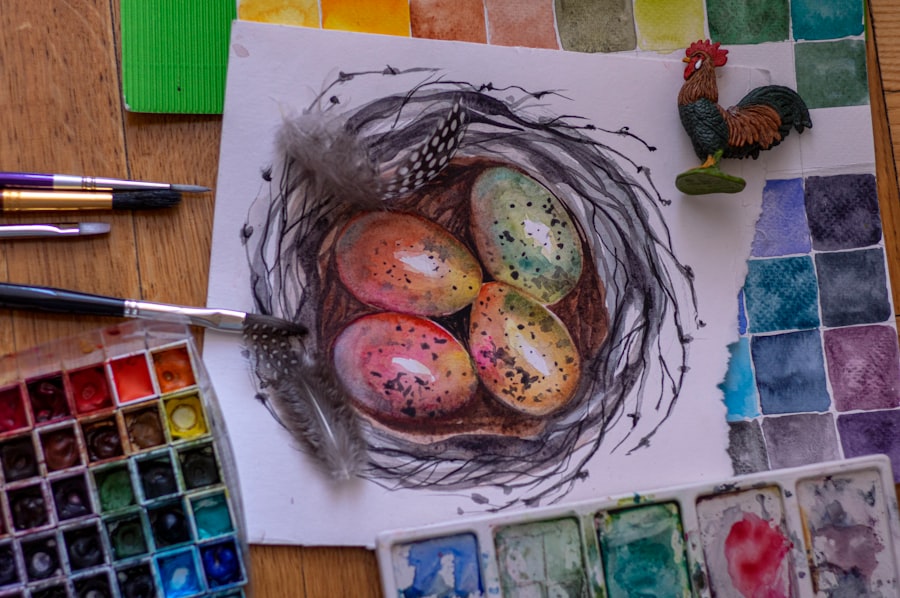
During hot weather, quail may experience reduced feed intake due to heat stress. To help mitigate this, owners can consider adjusting feeding schedules to encourage more consumption during cooler parts of the day. Feeding quail during the early morning or late evening when temperatures are lower can help ensure that they receive an adequate amount of nutrients despite reduced appetite during peak heat hours. Additionally, offering smaller but more frequent meals throughout the day can help prevent overeating during cooler periods while still providing essential nutrition.
In addition to adjusting feeding schedules, owners can also consider offering cooling treats such as frozen fruits or vegetables to provide additional hydration and relief from the heat. These treats can be offered in addition to regular feed or as a supplement during particularly hot days. By being mindful of feeding schedules and offering cooling treats, quail owners can help ensure that their birds receive essential nutrients and remain well-hydrated even during hot weather.
Monitoring quail for signs of heat stress
Finally, it’s crucial for quail owners to closely monitor their birds for signs of heat stress during hot weather. This includes observing their behavior, breathing rate, feed intake, and overall condition on a regular basis. Signs of heat stress in quail may include panting, lethargy, reduced activity, increased water consumption, and seeking out cooler areas within the enclosure. By being attentive to these signs, owners can take proactive measures to address heat stress before it escalates into a more serious health issue.
In addition to visual monitoring, owners can also use tools such as thermometers to regularly measure the ambient temperature inside the quail housing. This can help identify potential hot spots or areas with poor ventilation that may contribute to heat stress. By staying vigilant and proactive in monitoring their birds, owners can take timely action to address any issues related to heat stress and ensure the well-being of their quail flock.
In conclusion, heat stress is a significant concern for quail owners, especially during hot weather. By understanding the factors that contribute to heat stress and implementing appropriate measures such as providing shade and shelter, ensuring proper ventilation, offering cool and fresh water, using cooling methods such as misting or fans, adjusting feeding schedules, and monitoring quail for signs of heat stress, owners can help their birds thrive even in high temperatures. Prioritizing proactive management practices is essential for preventing heat stress and ensuring the health and productivity of quail flocks.
Looking for ways to keep your quail cool in the summer heat? Check out this helpful article on A-Frame Chicken Coop for some innovative ideas on creating a comfortable and shaded environment for your quail. This article provides valuable insights on how to design a coop that offers adequate ventilation and protection from the sun, ensuring your quail stay cool and healthy during the hot summer months.
FAQs
How can I keep my quail cool in the summer?
Quail can be kept cool in the summer by providing shade, proper ventilation, and access to cool water.
What are some ways to provide shade for quail in the summer?
Shade can be provided for quail by using natural shade from trees or shrubs, or by using artificial shade such as tarps or umbrellas.
How can I ensure proper ventilation for my quail in the summer?
Proper ventilation can be achieved by providing adequate spacing in the quail housing, using fans or vents, and ensuring that the housing is not overcrowded.
What are some tips for keeping quail’s water cool in the summer?
To keep quail’s water cool in the summer, you can use frozen water bottles or ice packs, or place the water containers in shaded areas.
Are there any specific breeds of quail that are more heat-tolerant?
Some quail breeds, such as the Coturnix quail, are known to be more heat-tolerant than others. It’s important to research the specific breed of quail you have to understand their heat tolerance.
Meet Walter, the feathered-friend fanatic of Florida! Nestled in the sunshine state, Walter struts through life with his feathered companions, clucking his way to happiness. With a coop that’s fancier than a five-star hotel, he’s the Don Juan of the chicken world. When he’s not teaching his hens to do the cha-cha, you’ll find him in a heated debate with his prized rooster, Sir Clucks-a-Lot. Walter’s poultry passion is no yolk; he’s the sunny-side-up guy you never knew you needed in your flock of friends!

